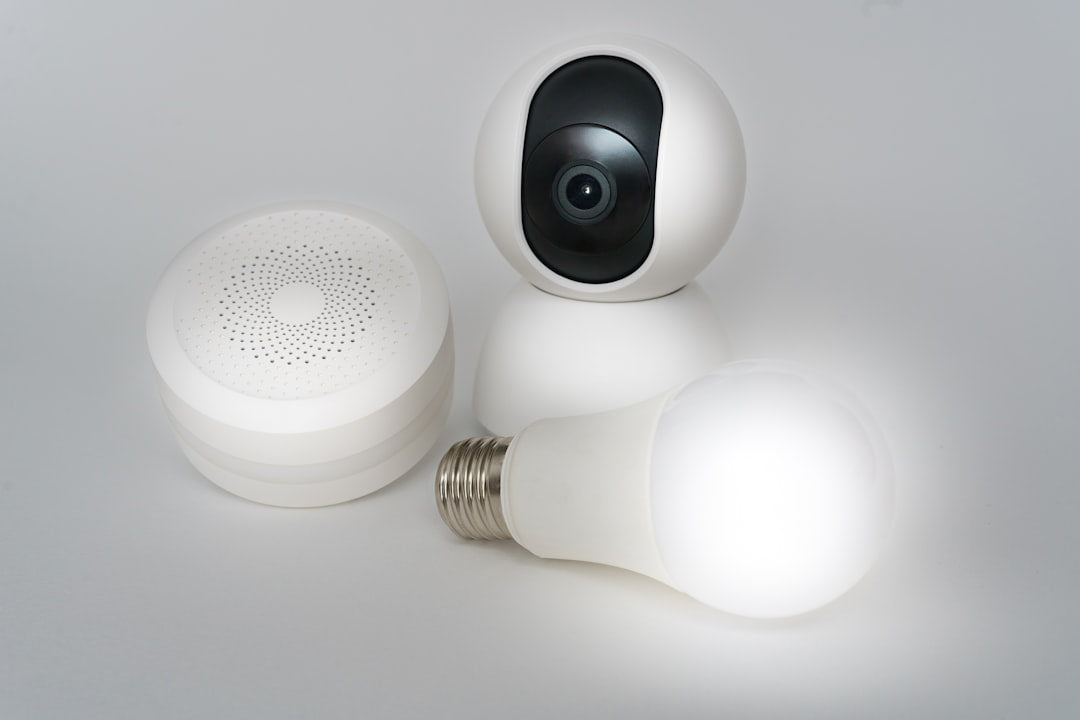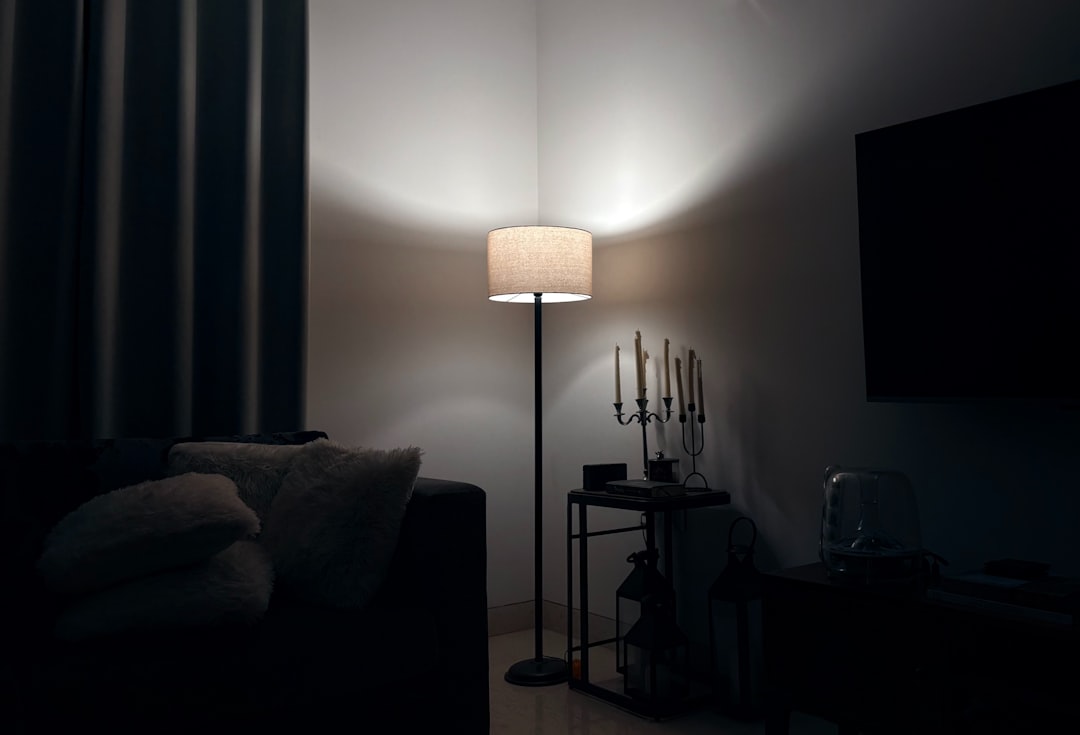How Smart Lighting Enhances Wellness and Transforms Your Home Automation
Discover how integrating smart lighting into your home not only elevates mood, focus, and comfort but also supports your body's natural rhythms and overall wellness.
Key Takeaways
- Smart lighting systems are designed to sync with your circadian rhythm, boosting sleep quality and daytime alertness.
- Tunable white and biodynamic lighting adapt to your daily activities and personal preferences for improved wellbeing.
- Energy-efficient LEDs, automated controls, and smart home integration save energy and add convenience.
- Personalized lighting scenes and advanced color control enhance mood, focus, and relaxation.
- Security and privacy considerations are essential when adopting network-connected smart lighting.
Table of Contents
- 1. What Is Smart Lighting and Why It Matters for Wellness
- 2. Tunable White LED Lighting: Lighting That Adapts to You
- 3. Biodynamic or Human-Centric Lighting: Automation Tailored to Your Body Clock
- 4. Personalized Lighting Scenes for Every Mood and Moment
- 5. Circadian Rhythm Synchronization: Aligning Life With Light
- 6. Energy Efficiency: Save Energy Without Compromising Experience
- 7. Integration With Smart Home Systems: Unified Living With Effortless Control
- 8. Color and Intensity Control: Designing Mood With Light
- 9. Ease of Control: Lighting That Adapts Effortlessly
- 10. Security and Privacy: Safeguarding Your Smart Home
- 11. Additional Benefits: More Than Just Light
- 12. Choosing the Right Smart Lighting Setup
- Conclusion: Brighten Your Life With Smart Lighting
1. What Is Smart Lighting and Why It Matters for Wellness
Smart lighting blends cutting-edge LED technology with wireless controls, sensors, and automation to create adaptable lighting tailored to your lifestyle. Beyond setting the perfect ambiance, these systems engage with your body's natural biological rhythms, influencing sleep, mood, and stress levels.
Wellness Benefits of Smart Lighting
- Enhances sleep quality by supporting natural melatonin production.
- Boosts morning alertness using blue-enriched light.
- Reduces symptoms of Seasonal Affective Disorder (SAD) by simulating natural daylight cycles.
- Promotes relaxation with warm, dim evening lighting to lower stress.
Explore more on circadian lighting for home and office.
2. Tunable White LED Lighting: Lighting That Adapts to You
Tunable white LED technology enables seamless shifts in white light color temperature, allowing you to customize from warm amber glows to cool, energizing blues—either manually or automatically—based on your needs and time of day.
Why Tunable White Lighting Is a Game-Changer
- Syncs with natural rhythms: Energize your mornings with bright, cool tones and unwind with warm, soft lights at night.
- Adapts to activities: Brighten your workspace or dim the lights for restful evenings.
- Enhances mood: Easily create uplifting or calming atmospheres at your fingertips.
Learn more about how tunable lighting supports wellness and productivity.
3. Biodynamic or Human-Centric Lighting: Automation Tailored to Your Body Clock
Biodynamic lighting, also called human-centric lighting, dynamically shifts brightness and color temperature throughout the day to mirror natural daylight patterns, supporting your body's circadian rhythm for better sleep and daytime focus.
Key Features of Biodynamic Lighting
- Natural light progression: Transitions from cool morning blues to warm evening ambers, replicating sunrise to sunset.
- Supports better sleep and focus: Helps regulate circadian rhythms, improving restfulness and alertness.
- Smart integration: Seamlessly connects with your smart home ecosystem to coordinate all devices.
Imagine waking up to a gentle, sunrise-like light, sustained energizing daylight through work hours, and calming illumination as night falls—all automated without a touch.
Discover more in this study on circadian lighting’s impact on health.
4. Personalized Lighting Scenes for Every Mood and Moment
Smart lighting’s customizable scenes let you tailor environments to whatever the moment calls for—whether productivity, relaxation, or social gatherings.
Scene Ideas to Elevate Daily Living
- Energizing Daylight: Bright, cool tones to enhance focus during work or study.
- Calming Evenings: Soft amber light to wind down and prepare for restful sleep.
- Reading Mode: Tuned brightness to support eye comfort without interfering with your sleep cycle.
- Automated Security: Motion-triggered or scheduled lighting for peace of mind when away.
Switch scenes effortlessly via mobile app, voice commands, or control panels. Explore tips on designing wellness-supportive lighting scenes.
5. Circadian Rhythm Synchronization: Aligning Life With Light
One of smart lighting’s most transformative benefits is adjusting artificial light to support your innate circadian rhythm, enhancing mental clarity, energy, and restorative sleep.
Light That Works With Your Body
- Morning Boost: Cool, blue-rich light activates alertness and focus.
- Afternoon Balance: Neutral steady light maintains energy and productivity.
- Evening Calm: Warm light encourages melatonin production, fostering deep rest.
- Night-Time Protection: Low-light settings reduce blue light exposure, protecting sleep quality.
Clinical studies highlight circadian lighting's effectiveness in cutting SAD symptoms by up to 50% and enhancing cognitive function. Dive deeper into the science behind circadian lighting and wellness.
6. Energy Efficiency: Save Energy Without Compromising Experience
Smart lighting reduces energy consumption by combining LED efficiency with intelligent automation.
How Smart Lighting Minimizes Energy Use
- LEDs Use Less Power: LEDs consume significantly less electricity than traditional bulbs.
- Sensor-Driven Lighting: Motion and occupancy sensors ensure lights activate only when needed.
- Custom Schedules: Automate routines to prevent unnecessary energy use.
- Dimming Capabilities: Reduce intensity for further savings without losing comfort.
Households may save 10–20% on electricity bills by adopting smart lighting. Learn about the energy benefits of circadian and RGB+TW lighting.
7. Integration With Smart Home Systems: Unified Living With Effortless Control
Modern smart lighting works seamlessly with connected home ecosystems, enhancing comfort, security, and convenience.
Smart Home Integration Highlights
- Control From Anywhere: Adjust lighting via apps or voice assistants like Alexa and Google Assistant.
- Dynamic Response: Sensors adjust lighting based on occupancy and ambient daylight.
- Smarter Security: Exterior lighting activates with motion or on schedules when away.
- Seamless Coordination: Sync lighting with thermostats, alarms, and cameras for cohesive automation.
See how lighting fits into holistic smart home wellness here.
8. Color and Intensity Control: Designing Mood With Light
Beyond white light, customizable color and brightness empower you to craft immersive and mood-enhancing environments.
How Color and Brightness Affect Wellbeing
- Cooler Blue Light: Supports focus and alertness, especially in the morning—but should be used cautiously at night.
- Warm Amber Tones: Calm the senses and prepare the body for restful sleep.
- Atmospheric Color Settings: Enhance celebrations, romantic dinners, or mindfulness practices.
- Visual Comfort: Proper hue and brightness reduce eye strain and fatigue.
Learn more about how light color impacts health, comfort, and space design.
9. Ease of Control: Lighting That Adapts Effortlessly
Smart lighting offers multiple intuitive control options freeing you from traditional switches.
Multiple Ways to Stay in Control
- Mobile Apps: Adjust settings remotely and schedule routines.
- Voice Commands: Hands-free control with assistants like Alexa and Google Assistant.
- Automated Sensors: Lights respond dynamically to presence and ambient conditions.
- Manual Override: Traditional switches remain for quick access.
10. Security and Privacy: Safeguarding Your Smart Home
Smart lighting convenience comes with cybersecurity and privacy considerations. Protect your system by understanding the key risks and defenses.
Key Risks to Watch
- Unauthorized access to control systems and personal data by hackers.
- Sensors collecting behavioral data that may infringe on privacy.
- Vulnerabilities due to weak network security.
How to Protect Your System
- Choose reputable brands with strong security protocols.
- Keep devices and apps updated with the latest software.
- Use encrypted, password-secured home networks.
- Regularly review permissions and limit data sharing.
Read more about protecting privacy in smart home ecosystems.
11. Additional Benefits: More Than Just Light
- Intruder Deterrence: Scheduled lighting simulates occupancy, enhancing home security.
- Reduced Headaches: Proper illumination decreases eye strain and related discomfort.
- Cost Savings: LED longevity reduces replacement frequency and maintenance costs.
- Healthcare Applications: Hospitals employ circadian lighting to improve patient outcomes and staff efficiency.
Smart lighting is a meaningful investment in wellness, comfort, and peace of mind, not just a tech upgrade.
12. Choosing the Right Smart Lighting Setup
To embark on your smart lighting journey, consider the following factors to ensure a balanced setup tailored to your needs:
- Wellness-focused features such as tunable or biodynamic lighting.
- Compatibility with your existing smart home ecosystem.
- Brand reputation and security standards.
- Installation requirements and overall budget.
Trusted experts like Automation Design & Entertainment and General International Group can help customize and simplify your installation process.
Conclusion: Brighten Your Life With Smart Lighting
Smart lighting transcends mere illumination—it's a strategic tool to enrich your quality of life. By harmonizing artificial light with your natural rhythms, adapting to your activities, and integrating seamlessly into your smart home, it delivers health benefits, energy savings, enhanced security, and unparalleled convenience.
Whether seeking deeper sleep, increased focus, or a safer, more comfortable home environment, smart lighting offers customizable solutions that truly transform how you live. It's time to illuminate your world with intention and wellness in mind.
Experience the brighter side of home living with Lightsdaddy’s collection of smart lighting solutions designed to match your space, style, and wellbeing needs.
Frequently Asked Questions
What is the main health benefit of smart lighting?
Smart lighting primarily supports circadian rhythm synchronization, which improves sleep quality, mood, and daytime alertness.
How does tunable white lighting work?
Tunable white lighting allows you to adjust the color temperature of white light—from warm to cool—either automatically or manually, to suit different times of day and activities.
Can smart lighting help reduce energy costs?
Yes, smart lighting uses energy-efficient LEDs, sensors, and scheduling features to reduce electricity consumption typically saving 10–20% on energy bills.
Is smart lighting compatible with voice assistants?
Most smart lighting systems integrate with popular voice assistants like Alexa and Google Assistant, offering hands-free control.
How do I protect my smart lighting from security risks?
Use strong, encrypted home networks, keep devices updated, choose reputable brands, and monitor app permissions regularly to safeguard your system.






